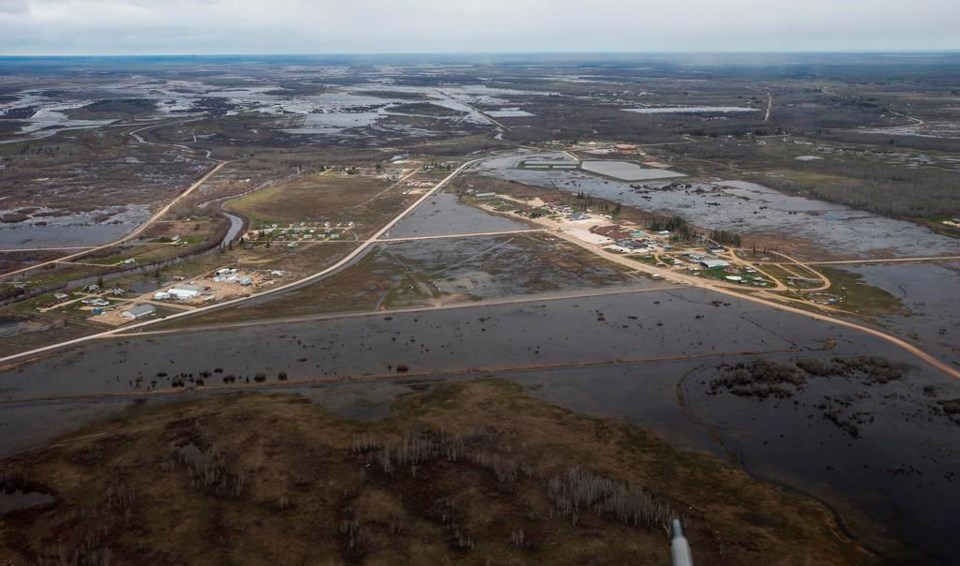WINNIPEG — A Manitoba First Nation that has suffered from chronic flooding is suing three levels of government for failing to provide adequate protection over decades.
Peguis First Nation filed a statement of claim Wednesday that alleges the federal and Manitoba governments failed to protect the community from frequent flooding that damaged homes and forced evacuations.
"Over the course of its history on the reserve land, Peguis has been flooded repeatedly and severely due to natural and man-made causes without the plaintiff receiving any or any meaningful protection, remediation or compensation," the document says.
The lawsuit also alleges two nearby municipalities diverted water from their areas to improve drainage, but in a way that added to flooding on the reserve's land.
The lawsuit contains allegations that have not been proven in court, and the defendants have not yet filed statements of defence.
Manitoba Premier Wab Kinew said Wednesday he would not comment on a matter before the courts.
The federal government said it has worked with Peguis on an ongoing basis, including a memorandum signed last year to formalize long-term flood protection and recovery.
"In addition, from May 2022 to March 2023, (Indigenous Services Canada) provided approximately $18 million to Peguis First Nation for flood response and recovery, including advance payments made to ease the burden of the First Nation's cash flow and to support 2023 flood preparation," a statement from the department read.
The lawsuit seeks $1 billion in damages, although it does not lay out an itemized list of costs.
Peguis First Nation was originally in another part of Manitoba on fertile farm land. It was relocated more than a century ago to the marshy delta of the Fisher River, 200 kilometres north of Winnipeg.
The federal government conceded in 1998 that the land transfer that prompted the move was illegal. The two sides reached a settlement 11 years later.
Flooding became more severe and more frequent in recent decades. The lawsuit alleges flooding was driven in part by government decisions to drain areas upstream and turn forests and wetlands into agricultural land.
There have been more than 10 floods since 1999, often resulting in evacuations of large parts of the community and damage to homes and water systems, the lawsuit says.
Stan Bird, the community's chief, said talks with the federal and provincial governments about improvements to flood protection have not gone far.
"We're called to the table time and time again, but nothing ever comes of that. That's all we do is talk," Bird said in an interview.
The most recent major flood happened in 2022. It forced more than 2,000 residents to flee and left hundreds of homes damaged or in need of replacement. Some 500 residents are still unable to return, the lawsuit says.
"They're homesick and they're psychologically and physically damaged by all of this," said Brian Meronek, one of the lawyers representing the First Nation.
The federal government has provided help to flood-proof some of the most vulnerable homes and has cost-shared a study with Manitoba on flood prevention.
Experts have discussed options, including a large dam upstream or a ring dike that could act as a wall around the sprawling community.
This report by The Canadian Press was first published April 24, 2024.
Steve Lambert, The Canadian Press




